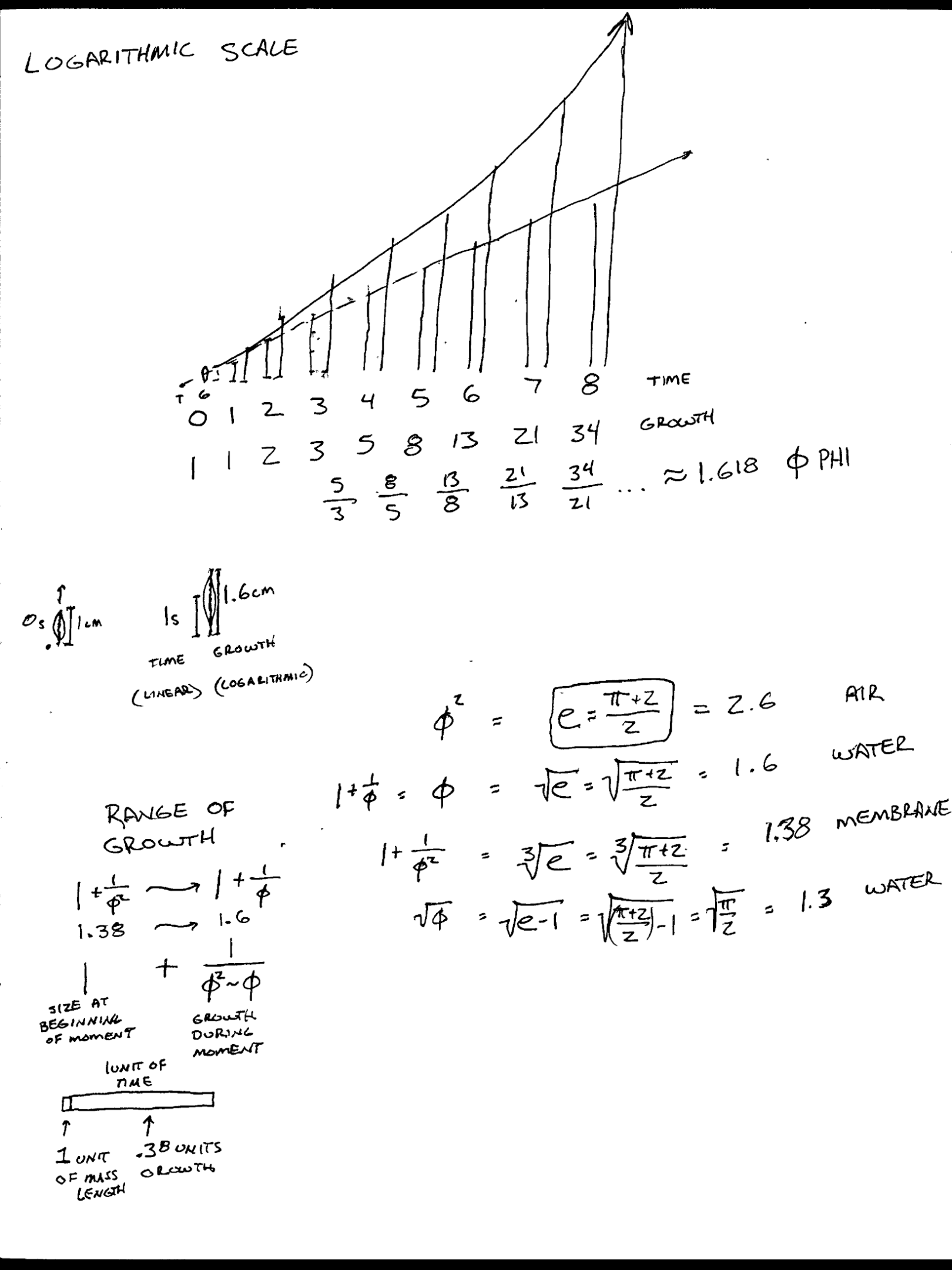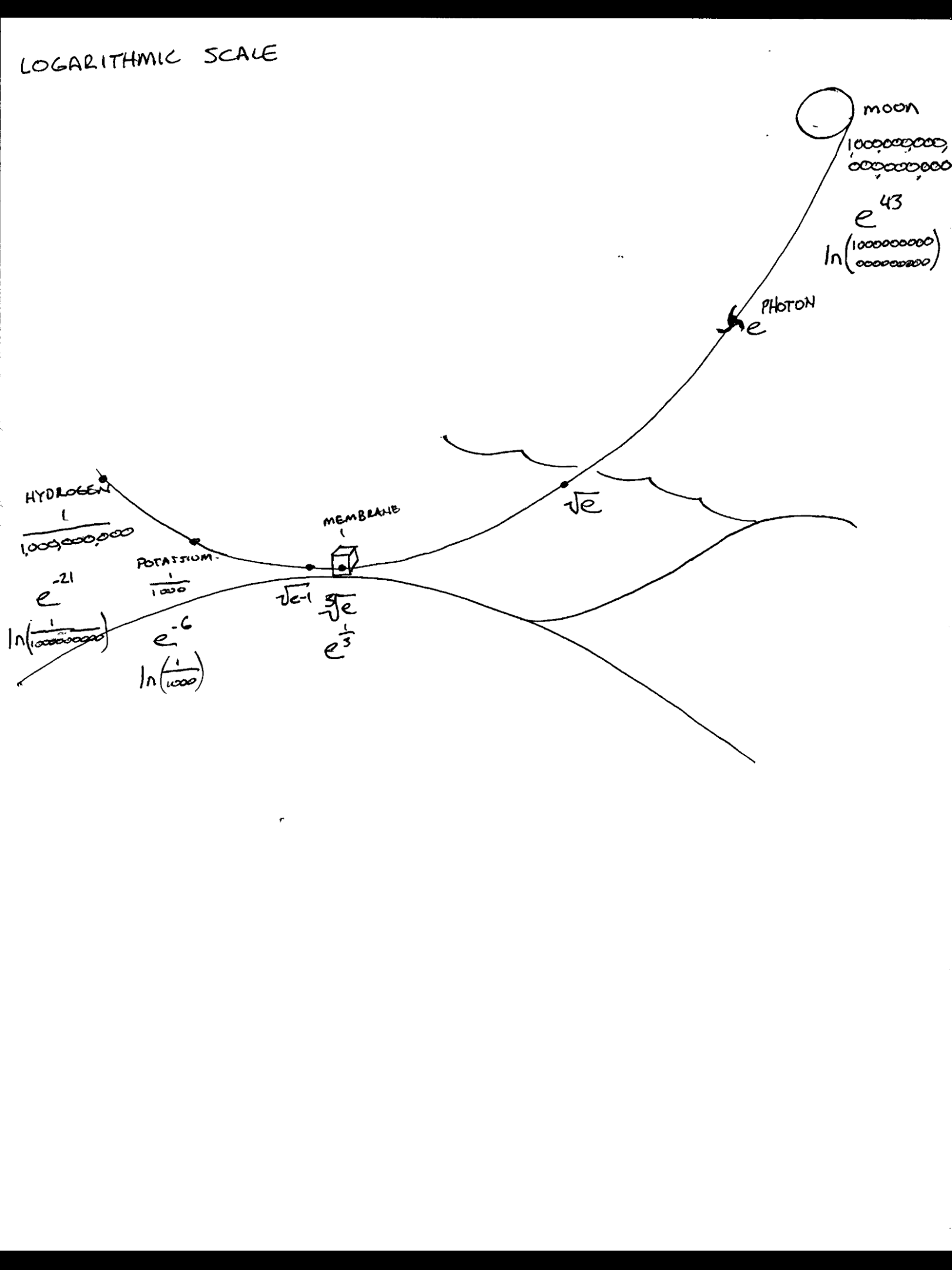
LOGARITHMIC SCALE
The electromagnetic spectrum is an example of a logarithmic scale. This spectrum enables comparisons to be made across different orders of magnitude. This scale makes it possible to relate small things to mid-sized things to big things (the density of a hydrogen particle, to a cubic centimeter of water, to the moon), for example
To relate the logarithmic scale to the number line, let’s imagine a tree growing in the forest. We want to determine how fast the tree grows, its speed, and it’s amount of growth over time.
During each unit of time, every part of the tree expands. We need a way to account for the infinitesimally small amount of growth happening within all parts of a tree.
To numerically account for this accumulation, we can arrange an arithmetic sequence where each next number in the sequence is found by adding up the two numbers before it. This will enable us to account for the growth of the tree with respect to the accumulated length. The sequence could read: 1+1=2, 1+2=3, 2+3=5, 3+5=8, 5+8=13 and so on.
Time on the number line would measure 1 2 3 4 5 6 7 8 (s)
Tree on the logarithmic scale would measure 1 2 3 5 8 13 21 34 (cm)
As we repeat this sequence, the ratios between the values of the growth get closer and closer to an infinite number we know as phi. 8/5 = 13/8 = 21/13 = 34/21 = each closer to phi 1.618…
If we zoom in to one unit of growth per unit of time, we see the growth is 1.6 and time is one. We could estimate the length of the other portion to be about 0.6, this equals 1/Phi.
Phi is a constant of proportionality of the growth of living systems. Similar to pi or e, anytime these constants are measured, the proportions are the same. Phi represents an important ratio that enables things to grow in proportion to their body.
This proportion is how a tree knows to grow the right amount of roots in proportion to its trunk, to its branches, to its leaves and its seeds. This balanced ratio describes in an abstract way how photons evolve into bacteria, algae, mushrooms, plants, trees, dinosaurs, birds, mammals and humans.
